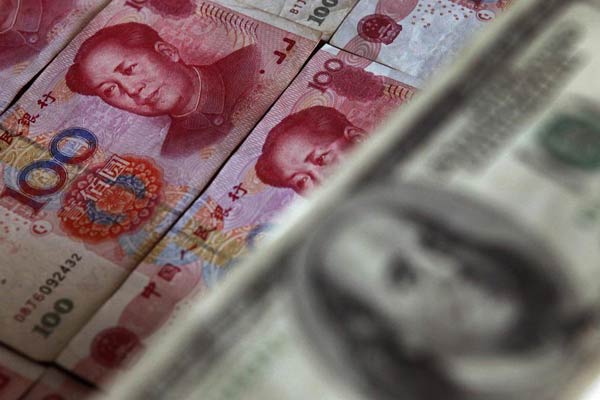Negative list for investment
Updated: 2016-04-13 07:24
(China Daily)
|
||||||||
 |
|
A photo illustration shows a $100 banknote placed above Chinese 100 yuan banknotes in Beijing in this May 10, 2013 file photo. [Photo/Agencies] |
The volume of foreign capital used nationwide was $11.76 billion in March, a decline of 6.1 percent year-on-year, while the first-quarter volume was $29.48 billion, a decline of 2.8 percent, according to statistics from the Ministry of Commerce.
Despite emerging signs that foreign investment is shifting to high-end manufacturing and the service sector, the continuous decline in inbound foreign capital is still cause for concern and underscores the need to make institutional improvements to facilitate the inflow of foreign capital.
The "positive list" management model of local governments' different preferential policies that prevails in China has erected some "glass walls" to the entry of foreign investment in numerous fields.
China should provide a revised negative list for US investment in preparation for the China-US Bilateral Investment Treaty talks, according to US trade representative Michael Froman, and the country should accelerate drawing up a negative list and submit it to the United States as soon as possible.
The publication of such a negative list will offer a transparent and predictable institutional environment to assure foreign investors of the areas they can invest in.
If such an investment treaty is reached with the US and broad institutional changes for foreign investment are initiated, China would greatly lower the investment costs for inbound foreign capital and more effectively combine foreign capital with domestic talent, thus pushing forward the transformation and upgrading of the Chinese economy.
In the face of the gradual decline in its demographic advantage and rising manufacturing costs at a time when its society is rapidly aging, China should use the negative list system to channel foreign capital into areas that promote the transformation of its manufacturing sector from Made in China to Created in China.
- Brazil commission recommends impeachment against Rousseff
- Severe storms rage through southern US states
- DPRK to participates in Paris climate signing ceremony
- Canadian PM to apologize for rejection of Sikh people in 1914
- Envoy to Middle East covers a lot of ground
- India detains 5 as temple fire kills 112

 Unforgettable wedding photos at fire station
Unforgettable wedding photos at fire station
 Jack Ma toasts wine with Italy's prime minister
Jack Ma toasts wine with Italy's prime minister
 Top 10 best airports in the world
Top 10 best airports in the world
 Water fight with elephants in Thailand
Water fight with elephants in Thailand
 Time-tripping steam train in Southwest China
Time-tripping steam train in Southwest China
 Actress Zhang Ziyi celebrates 100th day of her daughter
Actress Zhang Ziyi celebrates 100th day of her daughter
 19-year-old hit by train while taking selfie, dies on the spot
19-year-old hit by train while taking selfie, dies on the spot
 Striking images around world in week: April 4 - April 10
Striking images around world in week: April 4 - April 10
Most Viewed
Editor's Picks

|

|

|

|

|

|
Today's Top News
Duke alumni visit Chinese Embassy
Marriott unlikely to top Anbang offer for Starwood: Observers
Chinese biopharma debuts on Nasdaq
What ends Jeb Bush's White House hopes
Investigation for Nicolas's campaign
Will US-ASEAN meeting be good for region?
Accentuate the positive in Sino-US relations
Dangerous games on peninsula will have no winner
US Weekly

|

|







